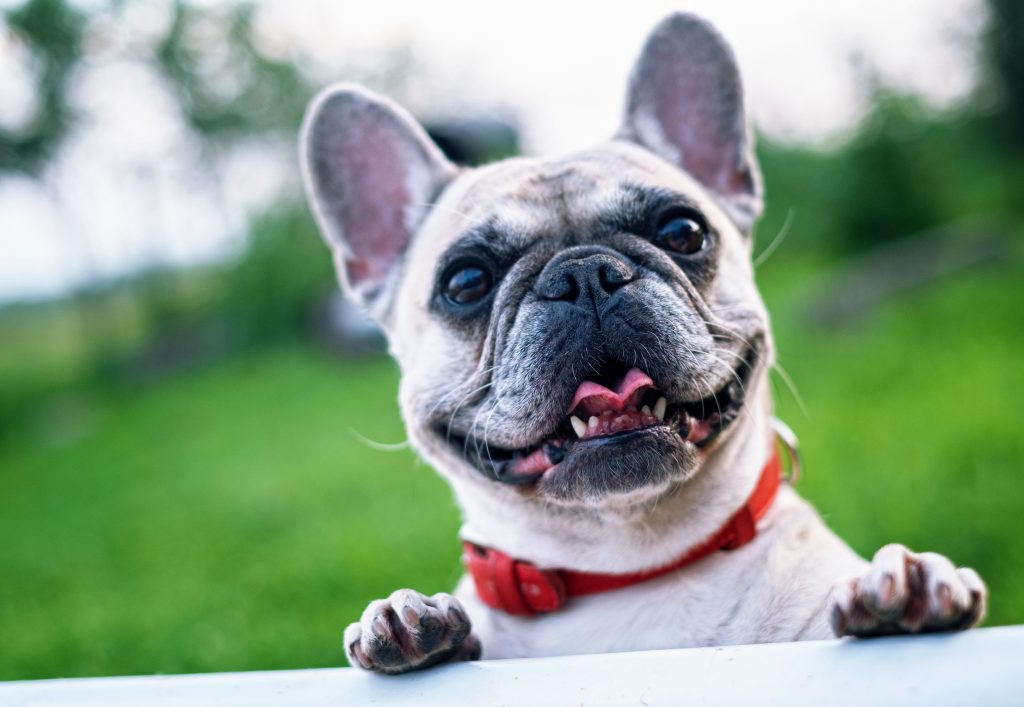Our furry companions have an incredible ability to bring joy and happiness into our lives. As dog owners, it’s our responsibility to ensure our four-legged friends are not just healthy but also genuinely happy. But how can we determine if our dogs are truly content? Understanding the signs of a happy dog can help us nurture their well-being and strengthen the bond we share with them.
Dogs communicate their emotions through various cues, both subtle and overt. By learning to recognize and interpret these signals, we can gain valuable insights into our dogs’ emotional state. In this blog post, we’ll explore the key indicators that can help you determine whether your dog is truly happy.

Signs of a Happy Dog
Here are some good signs that your dog is happy:
- Contented Body Language: A happy dog will exhibit relaxed body language. Look for a loose and wiggly body, with a relaxed posture. They may have a slightly open mouth, indicating a state of ease and comfort. Relaxed ears, a wagging tail that wags from the base, and a gentle sway in their movements are all positive signs.
- Excitement and Enthusiasm: Happy dogs show excitement and enthusiasm for everyday activities. They may greet you with a wagging tail, jumping or spinning around in joy when you come home. They eagerly engage in playtime, eagerly chasing after toys, and playfully interacting with you or other dogs.
- Good Appetite and Energy Level: A dog’s appetite and energy level are reliable indicators of their overall well-being. A happy dog will have a healthy appetite, eagerly eating their meals. They will also maintain a good energy level, being alert, responsive, and actively seeking out activities.
- Positive Social Interactions: Dogs are social animals, and positive social interactions are vital for their happiness. A happy dog will seek your attention, leaning into your touch, and enjoying cuddles or belly rubs. They may initiate play with other dogs, displaying friendly behavior and appropriate play signals. If your dog displays calm and friendly behavior around people and animals, it is a positive indication of their happiness.
- Relaxed Sleep: Dogs that are content and comfortable will have peaceful and relaxed sleep. They will curl up or stretch out comfortably, showing no signs of restlessness or anxiety. During sleep, they may exhibit relaxed muscle tone, gentle eye movements, and even dream-like twitching.
- Trust and Confidence: A happy dog feels secure in their environment and trusts their owner. They may exhibit signs of confidence, such as holding their head high, making direct eye contact, and exploring their surroundings with curiosity. They are more likely to exhibit a calm and composed demeanor in new situations.
- Tail Language: Pay attention to the nuances of your dog’s tail language. While a wagging tail can indicate happiness, the position and speed of the wag are also important. A loose and relaxed wag, with the tail held at mid-level or above, is generally a positive sign. However, a tucked tail or a stiff, rapid wagging motion may indicate anxiety or discomfort.
Remember, these indicators are general guidelines, and every dog is unique. Understanding your individual dog’s personality, breed traits, and normal behavior patterns is essential for accurate assessment. If you ever have concerns about your dog’s well-being or happiness, consult with a veterinarian or a professional dog behaviorist for further guidance.
Ways to Improve Your Dog’s Mood
Improving your dog’s mood is a wonderful way to enhance their overall well-being and strengthen your bond. Here are some tips to help boost your dog’s mood:
- Regular Exercise: Engage your dog in daily exercise appropriate for their breed and age. Regular physical activity helps release endorphins, which contribute to a positive mood. Take your dog for walks, play interactive games like fetch or tug-of-war, or consider activities such as swimming or agility training. Mental stimulation, through puzzle toys or training sessions, can also tire them out and improve their mood.
- Enrichment Activities: Provide your dog with plenty of mental stimulation to prevent boredom and lift their spirits. Interactive puzzle toys, treat-dispensing toys, and hide-and-seek games engage their problem-solving skills and keep their minds active. Rotate toys and introduce new ones periodically to keep their interest levels high.
- Positive Reinforcement: Use positive reinforcement techniques to reward and encourage desired behaviors. Praise, treats, and affection are powerful motivators for dogs. By rewarding good behavior and training new commands or tricks, you boost their confidence and create a positive association with learning.
- Socialization: Dogs are social creatures, and positive social interactions contribute to their happiness. Arrange playdates with other friendly and well-behaved dogs, or visit dog parks where they can engage in supervised play. Controlled socialization helps build their social skills, confidence, and overall mood.
- Quality Time and Bonding: Spend dedicated one-on-one time with your dog. Engage in activities that they enjoy, such as grooming sessions, cuddling, or simply sitting together. This quality time strengthens the bond between you and boosts their mood, knowing they have your undivided attention and affection.
- Healthy Diet: A balanced and nutritious diet plays a significant role in a dog’s mood and overall health. Ensure they are receiving high-quality food appropriate for their age, breed, and any specific dietary needs. Consult with your veterinarian for recommendations on the best diet for your dog’s individual requirements.
- Consistent Routine: Dogs thrive on routine and structure. Establish a consistent daily routine for feeding, exercise, playtime, and rest. Predictability and a sense of security contribute to their overall well-being and stability, promoting a positive mood.
- Environmental Enrichment: Create an enriching environment for your dog. Provide safe and engaging toys, access to different textures and surfaces, and opportunities to explore new smells and sounds. Rotate toys and change the arrangement of their living space to keep things interesting and prevent monotony.
- Calming Techniques: If your dog experiences anxiety or stress, consider incorporating calming techniques into their routine. This may include the use of calming pheromone diffusers, calming music, or creating a quiet and cozy space where they can retreat when they need to relax.

Understanding and nurturing your dog’s happiness is a journey that requires keen observation, empathy, and proactive measures. By learning to recognize the signs of a happy dog, such as wagging tails, bright eyes, and playful behavior, you can gain valuable insights into their emotional well-being. Additionally, by implementing strategies to improve your dog’s mood, you can enhance their overall quality of life and strengthen your bond with them.
Read more blog posts on our website here.



